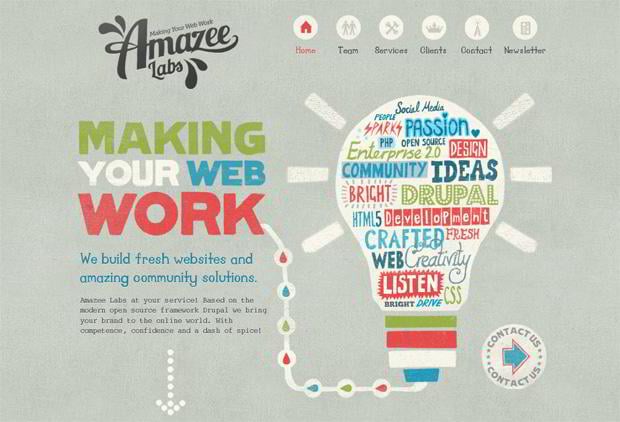Fundamental Elements Of Website Design: Standards For Creating A User-Centric Site
Fundamental Elements Of Website Design: Standards For Creating A User-Centric Site
Blog Article
Produced By-Aguirre Ehlers
When it concerns internet site layout, making sure user-friendliness is crucial. From receptive layout to streamlined navigation, every element plays an essential role in creating a website that caters to your audience's demands. However what about the finer details that can make or damage a customer's browsing experience? Remain tuned as we uncover some often-overlooked suggestions that can boost your website's usability to the following level, making it genuinely attract attention in the electronic landscape.
Importance of Responsive Style
Receptive style is a crucial facet of modern internet site advancement. wordpress design agency is responsive means that it can adapt to different display sizes and devices, providing a smooth experience for individuals.
With the increasing use smart devices and tablet computers to access the net, having a responsive design is necessary for reaching a larger audience. It helps in enhancing individual experience by making your website simple to browse and continue reading any tool.
In addition, responsive style can favorably impact your internet search engine rankings, as search engines like Google prioritize mobile-friendly internet sites. By having a responsive layout, you're likewise future-proofing your web site, as new tools with differing display sizes remain to emerge.
Simplify Navigation Framework
To boost user experience and assist in simple access to info on your internet site, streamlining the navigation structure is paramount. When making your website, concentrate on developing a clear and intuitive navigating menu that aids visitors find what they're seeking swiftly.
Restriction the variety of menu items to the fundamentals, organizing related web pages together to avoid overwhelming users. Usage detailed labels that plainly suggest the material of each page, making it much easier for individuals to comprehend where each web link will take them.
Take into consideration executing dropdown menus for subcategories to avoid jumbling the main navigation bar. Furthermore, include local search engine marketing company on the page for customers that favor searching for certain info.
Prioritize mobile responsiveness in your navigation style to guarantee simple gain access to on all gadgets.
Optimize Page Load Rate
Improving page load speed is vital for preserving visitors on your web site. Slow-loading pages frustrate customers and can cause high bounce rates. To maximize web page load rate, beginning by optimizing photos. Compress pictures without jeopardizing high quality to reduce their documents dimensions.
Additionally, enable internet browser caching to store often accessed sources locally, accelerating lots times for returning site visitors. Minify CSS, JavaScript, and HTML documents by eliminating unneeded characters, comments, and formatting, improving load speed.
Take into consideration using a content delivery network (CDN) to distribute your internet site's web content throughout several servers worldwide, minimizing latency for users accessing your site from different locations. Finally, restrict the use of third-party scripts and plugins, as they can substantially impact load times.
Final thought
In conclusion, by integrating responsive style, streamlining navigation, and enhancing page tons speed, you can create an easy to use site that interest a bigger audience and enhances individual experience. These essential elements make certain that site visitors can quickly accessibility and navigate your website throughout different gadgets, leading to enhanced involvement and complete satisfaction. By focusing on these essential elements, you can construct a successful website that keeps customers coming back for more.
